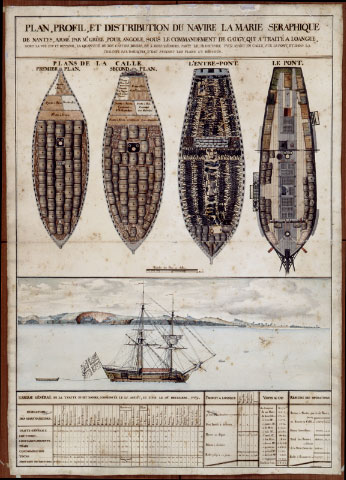French Slave Trade

Though the Portuguese and British dominated the transatlantic slave trade, the French were the third largest slave traders, elevated to that rank by the staggering numbers of Africans delivered to Saint-Domingue (Haiti) in the late eighteenth century. Of the 1,381,000 Africans loaded onto French ships during the course of the transatlantic trade, 1,165,000 survived the Middle Passage to encounter harsh conditions mostly in French Caribbean colonies. Though substantial numbers sailed on French ships to Guadeloupe (73,000) and Martinique (217,200), the vast majority (773,000) went to Saint-Domingue—the New World’s most profitable eighteenth-century colony.
French possessions in the Caribbean were larger in population and more productive than British and Spanish holdings in the region, and voyages based in several key French port cities made it all possible. Le Havre was France’s first major slave-trading port and delivered captives to Martinique, French Guiana, and mostly Saint-Domingue. Nantes, Bordeaux, and La Rochelle outfitted large numbers of slave voyages that moved captives from vast regions of western Africa (from Senegambia to West-Central Africa) to the Dutch and French Guianas, Caribbean islands, and even the Spanish Caribbean mainland and Mississippi Delta, including Louisiana. Overwhelmingly, however, the sugar plantations of France’s crown jewel, Saint-Domingue, remained the destination for African survivors until the beginning of the Haitian Revolution in 1791.






